Pan He
Learning Scene Dynamics from Point Cloud Sequences
Nov 16, 2021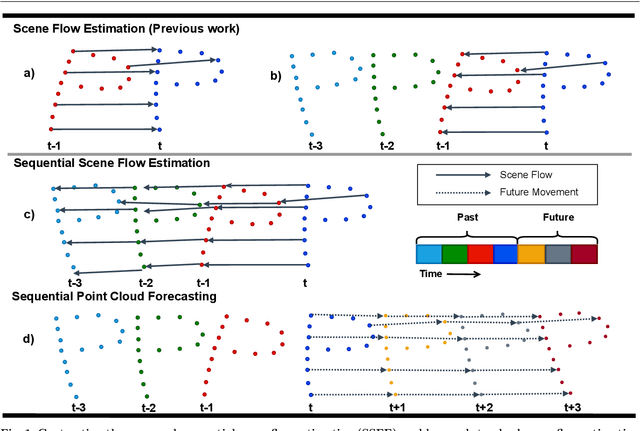

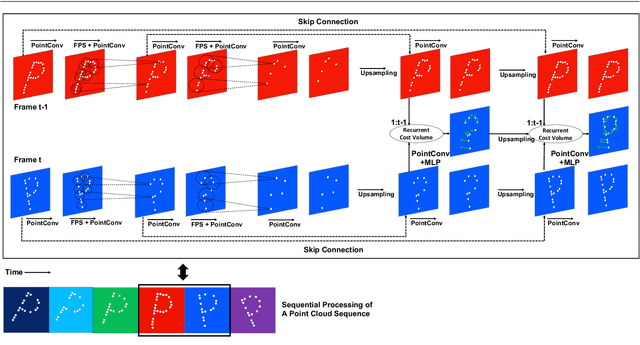
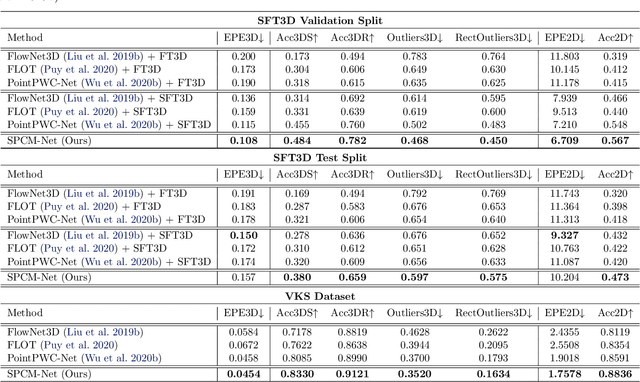
Abstract:Understanding 3D scenes is a critical prerequisite for autonomous agents. Recently, LiDAR and other sensors have made large amounts of data available in the form of temporal sequences of point cloud frames. In this work, we propose a novel problem -- sequential scene flow estimation (SSFE) -- that aims to predict 3D scene flow for all pairs of point clouds in a given sequence. This is unlike the previously studied problem of scene flow estimation which focuses on two frames. We introduce the SPCM-Net architecture, which solves this problem by computing multi-scale spatiotemporal correlations between neighboring point clouds and then aggregating the correlation across time with an order-invariant recurrent unit. Our experimental evaluation confirms that recurrent processing of point cloud sequences results in significantly better SSFE compared to using only two frames. Additionally, we demonstrate that this approach can be effectively modified for sequential point cloud forecasting (SPF), a related problem that demands forecasting future point cloud frames. Our experimental results are evaluated using a new benchmark for both SSFE and SPF consisting of synthetic and real datasets. Previously, datasets for scene flow estimation have been limited to two frames. We provide non-trivial extensions to these datasets for multi-frame estimation and prediction. Due to the difficulty of obtaining ground truth motion for real-world datasets, we use self-supervised training and evaluation metrics. We believe that this benchmark will be pivotal to future research in this area. All code for benchmark and models will be made accessible.
Efficient Iterative Amortized Inference for Learning Symmetric and Disentangled Multi-Object Representations
Jun 07, 2021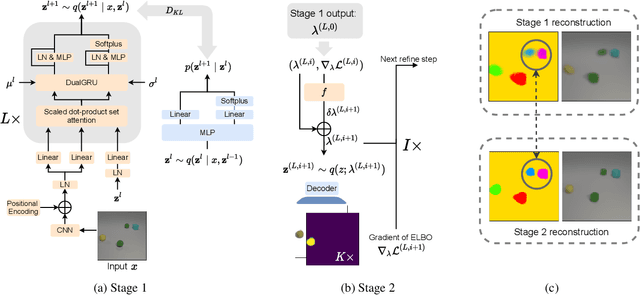
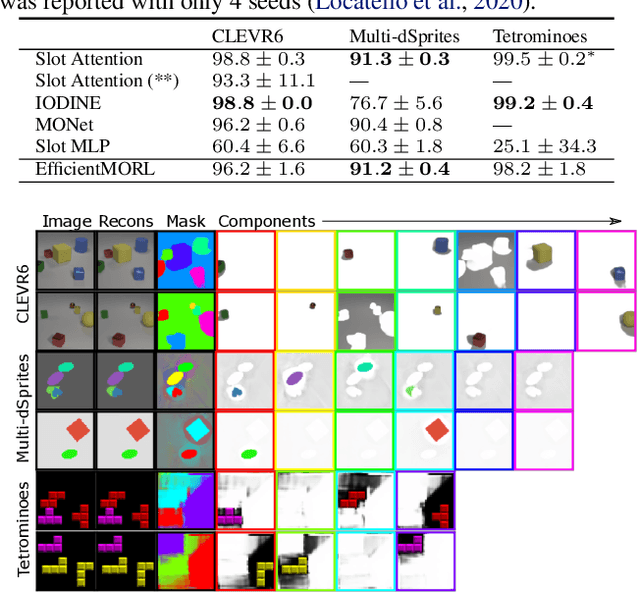
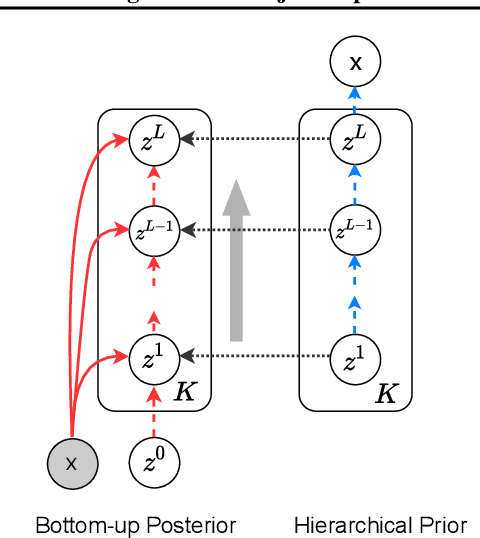

Abstract:Unsupervised multi-object representation learning depends on inductive biases to guide the discovery of object-centric representations that generalize. However, we observe that methods for learning these representations are either impractical due to long training times and large memory consumption or forego key inductive biases. In this work, we introduce EfficientMORL, an efficient framework for the unsupervised learning of object-centric representations. We show that optimization challenges caused by requiring both symmetry and disentanglement can in fact be addressed by high-cost iterative amortized inference by designing the framework to minimize its dependence on it. We take a two-stage approach to inference: first, a hierarchical variational autoencoder extracts symmetric and disentangled representations through bottom-up inference, and second, a lightweight network refines the representations with top-down feedback. The number of refinement steps taken during training is reduced following a curriculum, so that at test time with zero steps the model achieves 99.1% of the refined decomposition performance. We demonstrate strong object decomposition and disentanglement on the standard multi-object benchmark while achieving nearly an order of magnitude faster training and test time inference over the previous state-of-the-art model.
SparsePipe: Parallel Deep Learning for 3D Point Clouds
Dec 27, 2020
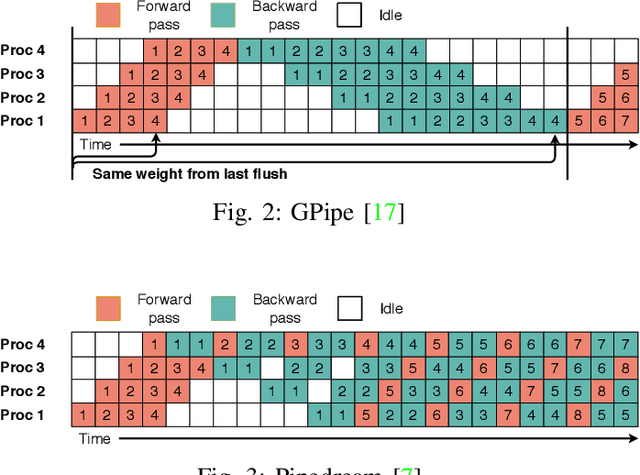

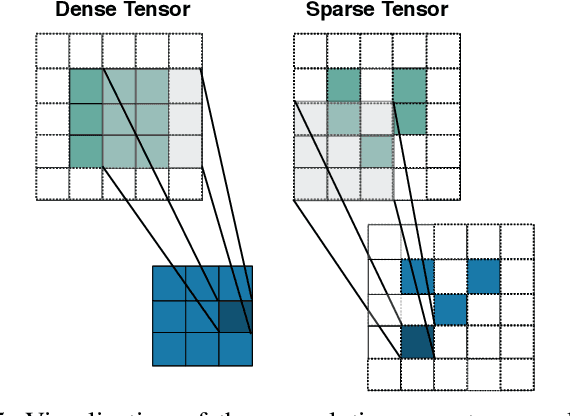
Abstract:We propose SparsePipe, an efficient and asynchronous parallelism approach for handling 3D point clouds with multi-GPU training. SparsePipe is built to support 3D sparse data such as point clouds. It achieves this by adopting generalized convolutions with sparse tensor representation to build expressive high-dimensional convolutional neural networks. Compared to dense solutions, the new models can efficiently process irregular point clouds without densely sliding over the entire space, significantly reducing the memory requirements and allowing higher resolutions of the underlying 3D volumes for better performance. SparsePipe exploits intra-batch parallelism that partitions input data into multiple processors and further improves the training throughput with inter-batch pipelining to overlap communication and computing. Besides, it suitably partitions the model when the GPUs are heterogeneous such that the computing is load-balanced with reduced communication overhead. Using experimental results on an eight-GPU platform, we show that SparsePipe can parallelize effectively and obtain better performance on current point cloud benchmarks for both training and inference, compared to its dense solutions.
Intelligent Intersection: Two-Stream Convolutional Networks for Real-time Near Accident Detection in Traffic Video
Jan 04, 2019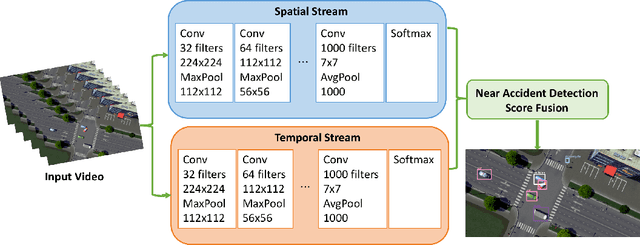
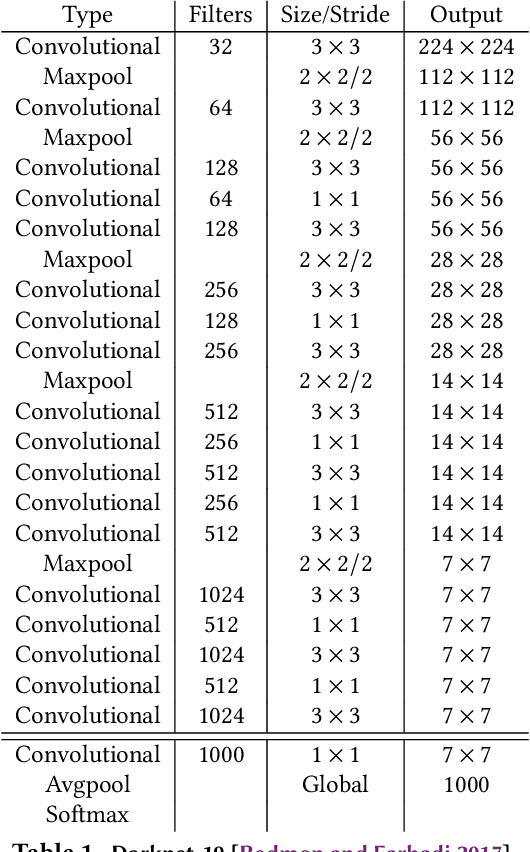

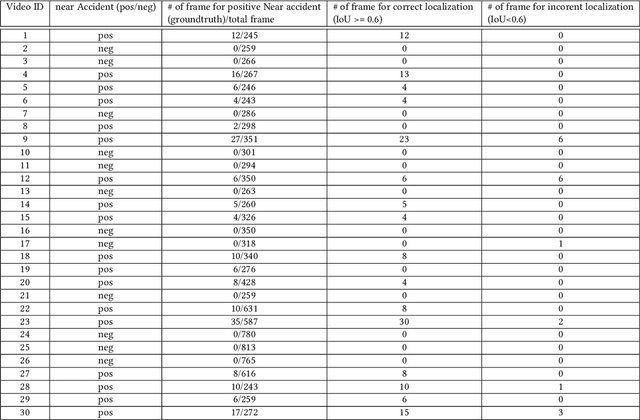
Abstract:In Intelligent Transportation System, real-time systems that monitor and analyze road users become increasingly critical as we march toward the smart city era. Vision-based frameworks for Object Detection, Multiple Object Tracking, and Traffic Near Accident Detection are important applications of Intelligent Transportation System, particularly in video surveillance and etc. Although deep neural networks have recently achieved great success in many computer vision tasks, a uniformed framework for all the three tasks is still challenging where the challenges multiply from demand for real-time performance, complex urban setting, highly dynamic traffic event, and many traffic movements. In this paper, we propose a two-stream Convolutional Network architecture that performs real-time detection, tracking, and near accident detection of road users in traffic video data. The two-stream model consists of a spatial stream network for Object Detection and a temporal stream network to leverage motion features for Multiple Object Tracking. We detect near accidents by incorporating appearance features and motion features from two-stream networks. Using aerial videos, we propose a Traffic Near Accident Dataset (TNAD) covering various types of traffic interactions that is suitable for vision-based traffic analysis tasks. Our experiments demonstrate the advantage of our framework with an overall competitive qualitative and quantitative performance at high frame rates on the TNAD dataset.
Adaptive Adversarial Attack on Scene Text Recognition
Jul 09, 2018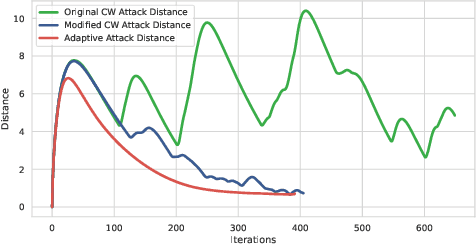

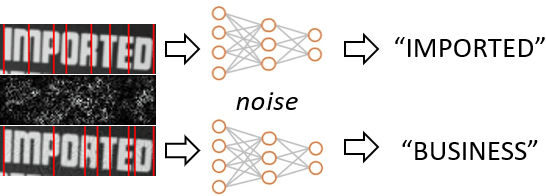

Abstract:Recent studies have shown that state-of-the-art deep learning models are vulnerable to the inputs with small perturbations (adversarial examples). We observe two critical obstacles in adversarial examples: (i) Strong adversarial attacks require manually tuning hyper-parameters, which take longer time to construct a single adversarial example, making it impractical to attack real-time systems; (ii) Most of the studies focus on non-sequential tasks, such as image classification and object detection. Only a few consider sequential tasks. Despite extensive research studies, the cause of adversarial examples remains an open problem, especially on sequential tasks. We propose an adaptive adversarial attack, called AdaptiveAttack, to speed up the process of generating adversarial examples. To validate its effectiveness, we leverage the scene text detection task as a case study of sequential adversarial examples. We further visualize the generated adversarial examples to analyze the cause of sequential adversarial examples. AdaptiveAttack achieved over 99.9\% success rate with 3-6 times speedup compared to state-of-the-art adversarial attacks.
Adversarial Examples: Attacks and Defenses for Deep Learning
Jul 07, 2018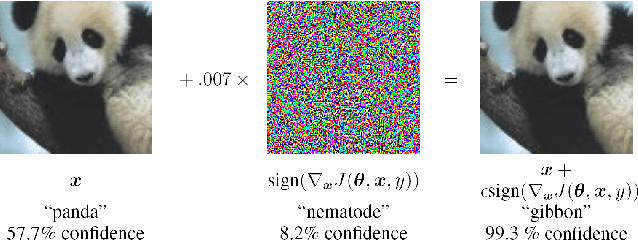
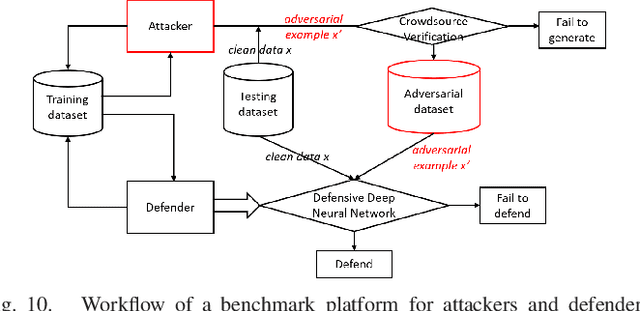

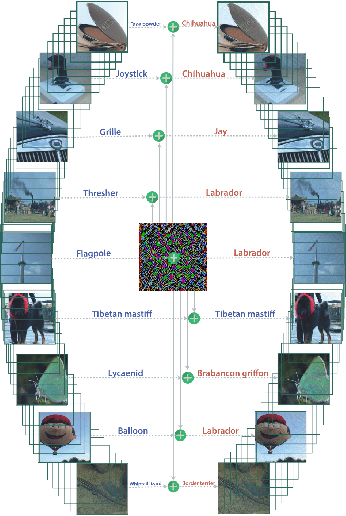
Abstract:With rapid progress and significant successes in a wide spectrum of applications, deep learning is being applied in many safety-critical environments. However, deep neural networks have been recently found vulnerable to well-designed input samples, called adversarial examples. Adversarial examples are imperceptible to human but can easily fool deep neural networks in the testing/deploying stage. The vulnerability to adversarial examples becomes one of the major risks for applying deep neural networks in safety-critical environments. Therefore, attacks and defenses on adversarial examples draw great attention. In this paper, we review recent findings on adversarial examples for deep neural networks, summarize the methods for generating adversarial examples, and propose a taxonomy of these methods. Under the taxonomy, applications for adversarial examples are investigated. We further elaborate on countermeasures for adversarial examples and explore the challenges and the potential solutions.
Boosting up Scene Text Detectors with Guided CNN
May 14, 2018

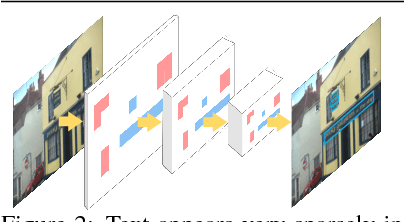

Abstract:Deep CNNs have achieved great success in text detection. Most of existing methods attempt to improve accuracy with sophisticated network design, while paying less attention on speed. In this paper, we propose a general framework for text detection called Guided CNN to achieve the two goals simultaneously. The proposed model consists of one guidance subnetwork, where a guidance mask is learned from the input image itself, and one primary text detector, where every convolution and non-linear operation are conducted only in the guidance mask. On the one hand, the guidance subnetwork filters out non-text regions coarsely, greatly reduces the computation complexity. On the other hand, the primary text detector focuses on distinguishing between text and hard non-text regions and regressing text bounding boxes, achieves a better detection accuracy. A training strategy, called background-aware block-wise random synthesis, is proposed to further boost up the performance. We demonstrate that the proposed Guided CNN is not only effective but also efficient with two state-of-the-art methods, CTPN and EAST, as backbones. On the challenging benchmark ICDAR 2013, it speeds up CTPN by 2.9 times on average, while improving the F-measure by 1.5%. On ICDAR 2015, it speeds up EAST by 2.0 times while improving the F-measure by 1.0%.
Learning Fast and Slow: PROPEDEUTICA for Real-time Malware Detection
Dec 04, 2017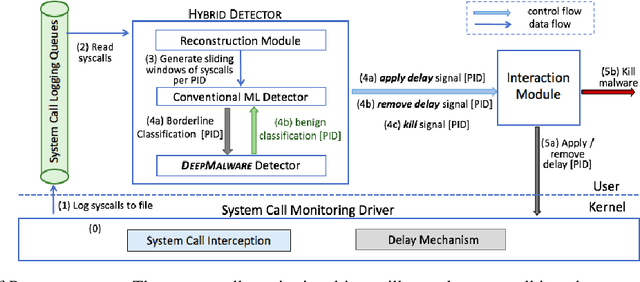



Abstract:In this paper, we introduce and evaluate PROPEDEUTICA, a novel methodology and framework for efficient and effective real-time malware detection, leveraging the best of conventional machine learning (ML) and deep learning (DL) algorithms. In PROPEDEUTICA, all software processes in the system start execution subjected to a conventional ML detector for fast classification. If a piece of software receives a borderline classification, it is subjected to further analysis via more performance expensive and more accurate DL methods, via our newly proposed DL algorithm DEEPMALWARE. Further, we introduce delays to the execution of software subjected to deep learning analysis as a way to "buy time" for DL analysis and to rate-limit the impact of possible malware in the system. We evaluated PROPEDEUTICA with a set of 9,115 malware samples and 877 commonly used benign software samples from various categories for the Windows OS. Our results show that the false positive rate for conventional ML methods can reach 20%, and for modern DL methods it is usually below 6%. However, the classification time for DL can be 100X longer than conventional ML methods. PROPEDEUTICA improved the detection F1-score from 77.54% (conventional ML method) to 90.25%, and reduced the detection time by 54.86%. Further, the percentage of software subjected to DL analysis was approximately 40% on average. Further, the application of delays in software subjected to ML reduced the detection time by approximately 10%. Finally, we found and discussed a discrepancy between the detection accuracy offline (analysis after all traces are collected) and on-the-fly (analysis in tandem with trace collection). Our insights show that conventional ML and modern DL-based malware detectors in isolation cannot meet the needs of efficient and effective malware detection: high accuracy, low false positive rate, and short classification time.
Detecting Text in Natural Image with Connectionist Text Proposal Network
Sep 12, 2016



Abstract:We propose a novel Connectionist Text Proposal Network (CTPN) that accurately localizes text lines in natural image. The CTPN detects a text line in a sequence of fine-scale text proposals directly in convolutional feature maps. We develop a vertical anchor mechanism that jointly predicts location and text/non-text score of each fixed-width proposal, considerably improving localization accuracy. The sequential proposals are naturally connected by a recurrent neural network, which is seamlessly incorporated into the convolutional network, resulting in an end-to-end trainable model. This allows the CTPN to explore rich context information of image, making it powerful to detect extremely ambiguous text. The CTPN works reliably on multi-scale and multi- language text without further post-processing, departing from previous bottom-up methods requiring multi-step post-processing. It achieves 0.88 and 0.61 F-measure on the ICDAR 2013 and 2015 benchmarks, surpass- ing recent results [8, 35] by a large margin. The CTPN is computationally efficient with 0:14s/image, by using the very deep VGG16 model [27]. Online demo is available at: http://textdet.com/.
Reading Scene Text in Deep Convolutional Sequences
Dec 20, 2015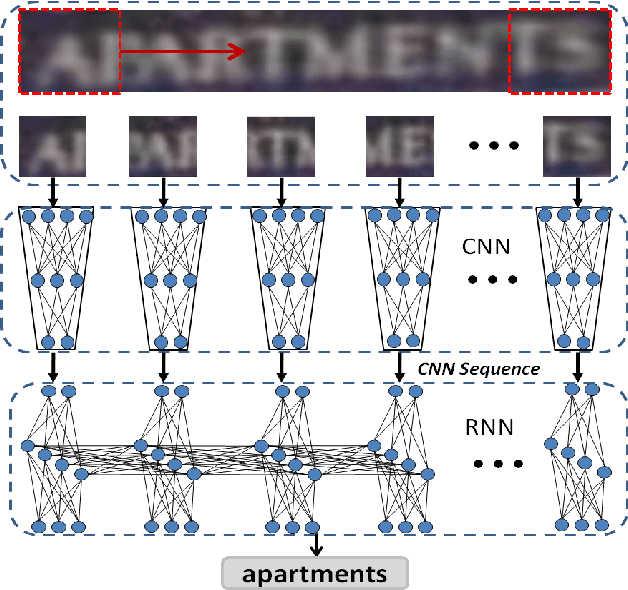
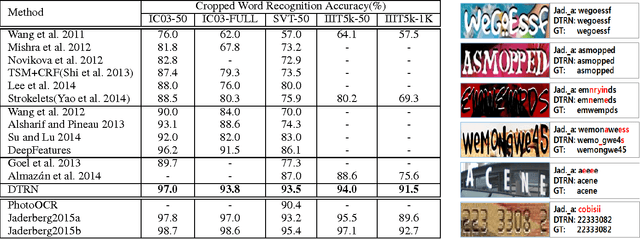

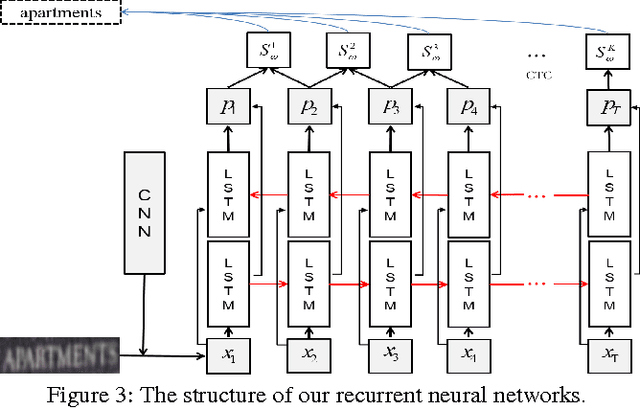
Abstract:We develop a Deep-Text Recurrent Network (DTRN) that regards scene text reading as a sequence labelling problem. We leverage recent advances of deep convolutional neural networks to generate an ordered high-level sequence from a whole word image, avoiding the difficult character segmentation problem. Then a deep recurrent model, building on long short-term memory (LSTM), is developed to robustly recognize the generated CNN sequences, departing from most existing approaches recognising each character independently. Our model has a number of appealing properties in comparison to existing scene text recognition methods: (i) It can recognise highly ambiguous words by leveraging meaningful context information, allowing it to work reliably without either pre- or post-processing; (ii) the deep CNN feature is robust to various image distortions; (iii) it retains the explicit order information in word image, which is essential to discriminate word strings; (iv) the model does not depend on pre-defined dictionary, and it can process unknown words and arbitrary strings. Codes for the DTRN will be available.
 Add to Chrome
Add to Chrome Add to Firefox
Add to Firefox Add to Edge
Add to Edge